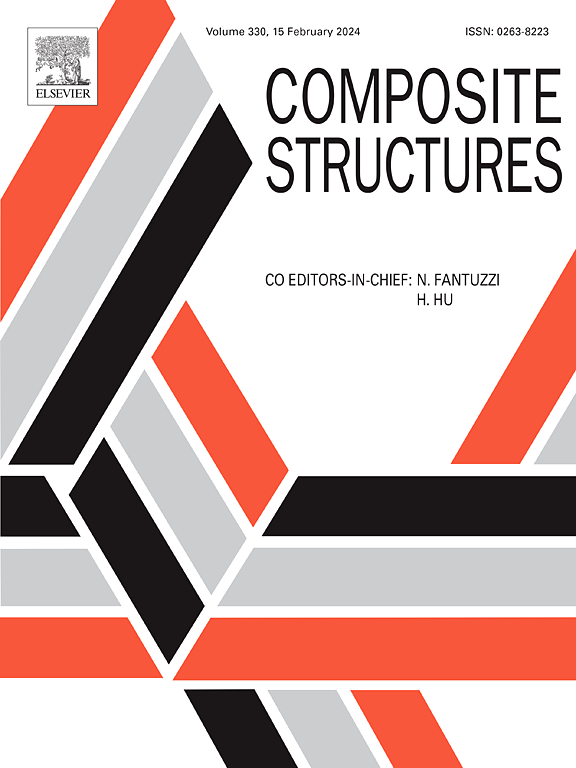Re-entrant thermal-responsive metamaterials with widely tunable thermal expansion
IF 6.3
2区 材料科学
Q1 MATERIALS SCIENCE, COMPOSITES
引用次数: 0
Abstract
Auxetic metamaterials have been widely used in sensing, flexible medical devices, and energy absorption, due to their extraordinary physical properties. However, the active tunability of their deformation shapes and mechanical performances remains a significant challenge, which limits the functional applications. Here, we fabricate several auxetic re-entrant honeycombs integrated with thermostat metal strips to achieve arbitrary thermal shape morphing at a wide temperature range. The findings indicate that the maximum positive and negative thermal strains achieved are 45 % and 37 %, respectively. In addition, we introduce a customizable thermal deformation strategy by tessellating the unit cells with different thermo-responsive characteristics, including isotropic or anisotropic thermal expansions. An Ashby plot of thermal strain vs. temperature span among current thermo-responsive metamaterials is concluded to quantitatively compare the capacities that actively tune their thermal morphing configurations. The uniaxial thermal strain range in finite elements is substantially expanded to –47 % to 94 % at a wide working temperature range. Various potential functionalities and applications are illustrated including the tunable bandgap for vibration isolation, multisignal conversion in sensing devices, and thermal actuators.
具有广泛可调热膨胀的可重入式热响应超材料
辅助超材料由于其特殊的物理性能,在传感、柔性医疗设备和能量吸收等领域得到了广泛的应用。然而,其变形形状和力学性能的主动可调性仍然是一个重大挑战,这限制了其功能应用。在这里,我们制造了几个与恒温金属带集成的auxetic再入式蜂窝,以实现在宽温度范围内的任意热形状变形。结果表明,所获得的最大正、负热应变分别为45%和37%。此外,我们引入了一种可定制的热变形策略,通过细分具有不同热响应特性的单元胞,包括各向同性或各向异性热膨胀。总结了当前热响应超材料的热应变与温度跨度的Ashby图,以定量比较主动调整其热变形构型的能力。在较宽的工作温度范围内,有限元的单轴热应变范围大幅扩大至- 47%至94%。各种潜在的功能和应用,包括可调的带隙隔振,传感设备中的多信号转换,和热致动器。
本文章由计算机程序翻译,如有差异,请以英文原文为准。
求助全文
约1分钟内获得全文
求助全文
来源期刊

Composite Structures
工程技术-材料科学:复合
CiteScore
12.00
自引率
12.70%
发文量
1246
审稿时长
78 days
期刊介绍:
The past few decades have seen outstanding advances in the use of composite materials in structural applications. There can be little doubt that, within engineering circles, composites have revolutionised traditional design concepts and made possible an unparalleled range of new and exciting possibilities as viable materials for construction. Composite Structures, an International Journal, disseminates knowledge between users, manufacturers, designers and researchers involved in structures or structural components manufactured using composite materials.
The journal publishes papers which contribute to knowledge in the use of composite materials in engineering structures. Papers deal with design, research and development studies, experimental investigations, theoretical analysis and fabrication techniques relevant to the application of composites in load-bearing components for assemblies, ranging from individual components such as plates and shells to complete composite structures.
 求助内容:
求助内容: 应助结果提醒方式:
应助结果提醒方式:


